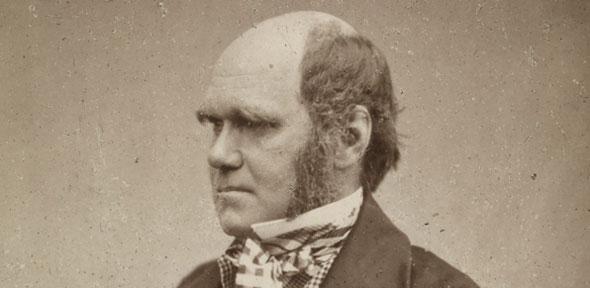The evolution of Darwin’s Origin: Cambridge releases 12,000 papers online

The origins of Darwin’s theory of evolution – including the pages where he first coins and commits to paper the term ‘natural selection’ – are being made freely available online today in one of the most significant releases of Darwin material in history.
The origins of Darwin’s theory of evolution – including the pages where he first coins and commits to paper the term ‘natural selection’ – are being made freely available online today in one of the most significant releases of Darwin material in history.
The information Darwin received, and the discussions he conducted in these letters played a crucial role in the development of his thinking.Alison Pearn
In total, Cambridge Digital Library (http://bit.ly/1y7q4e1) is releasing more than 12,000 hi-res images, alongside transcriptions and detailed notes as a result of an international collaboration with the Darwin Manuscript Project, based at the American Museum of Natural History. These papers chart the evolution of Darwin’s journey, from early theoretical reflections while on board HMS Beagle, to the publication of On the Origin of Species – 155 years ago today.
The launch of Darwin’s papers also marks the end of the first phase of funding for Cambridge’s Digital Library, launched to worldwide acclaim in 2011 with the publication of Isaac Newton’s scientific archive. Initial £1.5m funding for the Digital Library was provided by the Polonsky Foundation. Funding for the digitisation and transcription of the Origin papers was provided by the US National Endowment for the Humanities and National Science Foundation.
Cambridge University Library holds almost the entire collection of Darwin’s working scientific papers and the ones being released today are the most important for understanding the development of his evolutionary theory. They are being published simultaneously on the Cambridge Digital Library and Darwin Manuscripts Project websites, with a further release planned for June 2015, covering the notes and drafts of his eight post-Origin books.
None of the Darwin documents available from today have hitherto been digitised to the present high standard of full colour and high resolution, and many have never been transcribed or edited before now.
Professor David Kohn, Director of the Darwin Manuscripts Project, said: “These documents truly constitute the surviving seedbed of the Origin. In them, Darwin hammered out natural selection and the structure of concepts he used to support natural selection. It was here also that he developed his evolutionary narrative and where he experimented privately with arguments and strategies of presentation that he either rejected or that eventually saw the light of day with the Origin’s publication on November 24, 1859.”
The current release includes important documents such as the “Transmutation” and “Metaphysical” notebooks of the 1830s and the 1842 “Pencil Sketch” which sees Darwin’s first use of the term “natural selection”.
It was in Transmutation Notebook B, that Darwin first attempted to formulate a full theory of evolution and it was in Notebooks D and E that natural selection began to take form in late 1838 and early 1839. The further maturation of Darwin’s theory is found in the three experiment notebooks he began in the late 1830s and mid 1850s, and above all in a large mass of previously unpublished loose notes, primarily from the 1830s-1850s, which Darwin organised into portfolios that generally parallel the chapters of the Origin.
Also included will be images of nearly 300 of Darwin's letters with transcriptions and notes provided by the Darwin Correspondence Project, an Anglo-American research group also based in Cambridge University.
Associate Director, Dr Alison Pearn, said: “The information Darwin received, and the discussions he conducted in these letters played a crucial role in the development of his thinking. It is a really significant step that now for the first time they can be studied and searched in the context of the scientific papers of which they are an integral part.”
Also being published on the Digital Library today is a catalogue of the University Library’s Sanskrit Collections, detailing more than 1,600 manuscripts, 500 of which are fully digitised. Along with important works from the many religious traditions of South Asia, including Vedic, Hindu, Buddhist and Jainist texts – the collection also includes texts on “secular” topics, ranging from works of poetry and drama to treatises on philosophy, mathematics, grammar, astronomy, law, eroticism and medicine.
Anne Jarvis, Cambridge University Librarian, said: “With seed funding from the Polonsky Foundation, we launched the Cambridge Digital Library in 2011 with Isaac Newton’s papers, declaring our ambition of becoming a digital library for the world, opening up our collections to anyone, anywhere on the planet with access to the Internet. Now, after millions of visits to the Digital Library website, we bookend our first phase of development with the launch of Charles Darwin’s papers and our Sanskrit collection. These now sit alongside Newton’s scientific works and a wealth of other material, including the Board of Longitude papers and, most recently, our Siegfried Sassoon archive.”
The text in this work is licensed under a Creative Commons Licence. If you use this content on your site please link back to this page. For image rights, please see the credits associated with each individual image.

沒有留言:
張貼留言